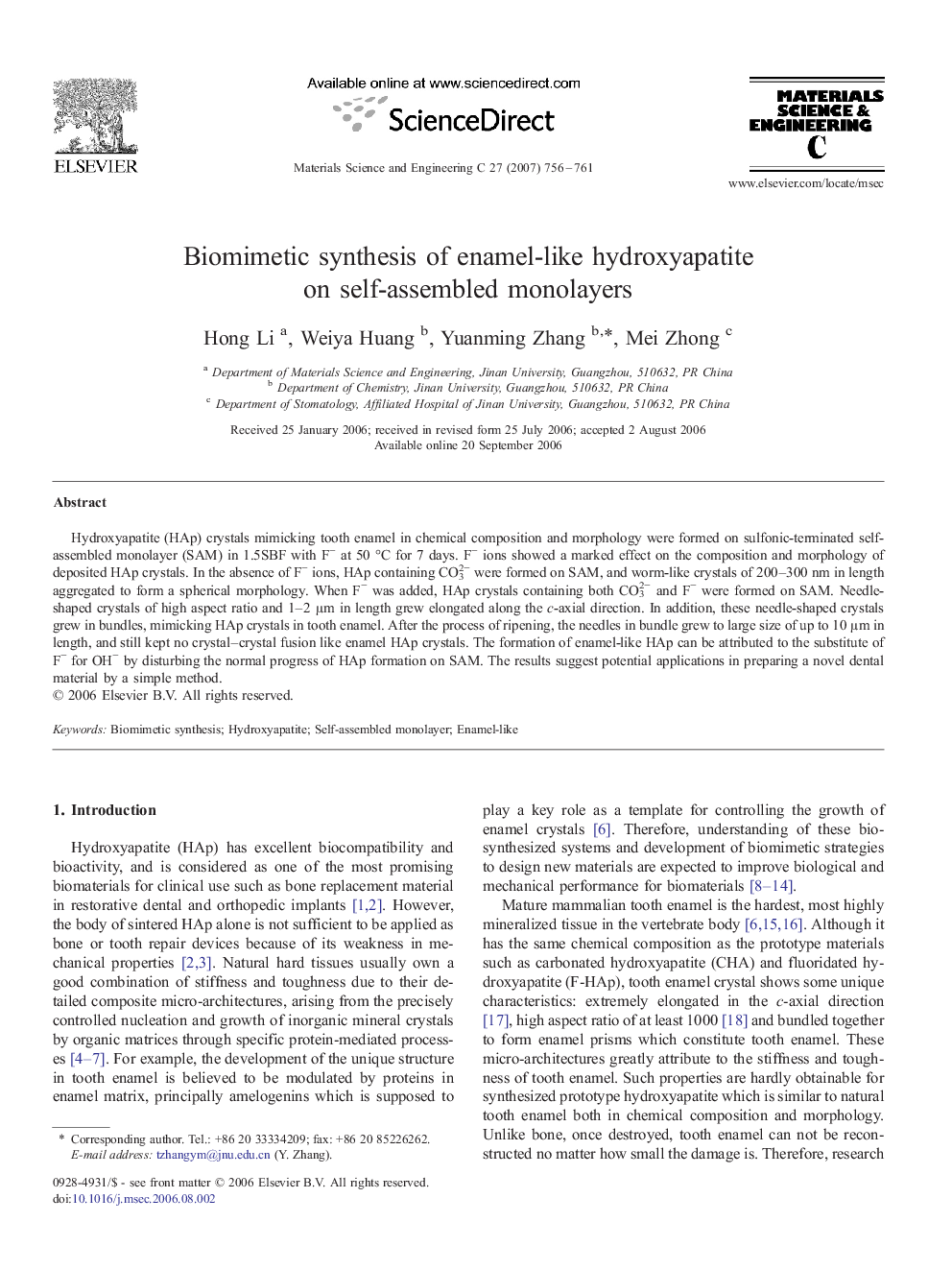| Article ID | Journal | Published Year | Pages | File Type |
|---|---|---|---|---|
| 1430976 | Materials Science and Engineering: C | 2007 | 6 Pages |
Hydroxyapatite (HAp) crystals mimicking tooth enamel in chemical composition and morphology were formed on sulfonic-terminated self-assembled monolayer (SAM) in 1.5SBF with F− at 50 °C for 7 days. F− ions showed a marked effect on the composition and morphology of deposited HAp crystals. In the absence of F− ions, HAp containing CO32− were formed on SAM, and worm-like crystals of 200–300 nm in length aggregated to form a spherical morphology. When F− was added, HAp crystals containing both CO32− and F− were formed on SAM. Needle-shaped crystals of high aspect ratio and 1–2 μm in length grew elongated along the c-axial direction. In addition, these needle-shaped crystals grew in bundles, mimicking HAp crystals in tooth enamel. After the process of ripening, the needles in bundle grew to large size of up to 10 μm in length, and still kept no crystal–crystal fusion like enamel HAp crystals. The formation of enamel-like HAp can be attributed to the substitute of F− for OH− by disturbing the normal progress of HAp formation on SAM. The results suggest potential applications in preparing a novel dental material by a simple method.
Graphical abstractHydroxyapatite (HAp) crystals mimicking tooth enamel in chemical composition and morphology were formed on self-assembled monolayer (SAM) by a biomimetic process. The needle-shaped crystals grew in bundles, mimicking HAp crystals in tooth enamel.Figure optionsDownload full-size imageDownload as PowerPoint slide
